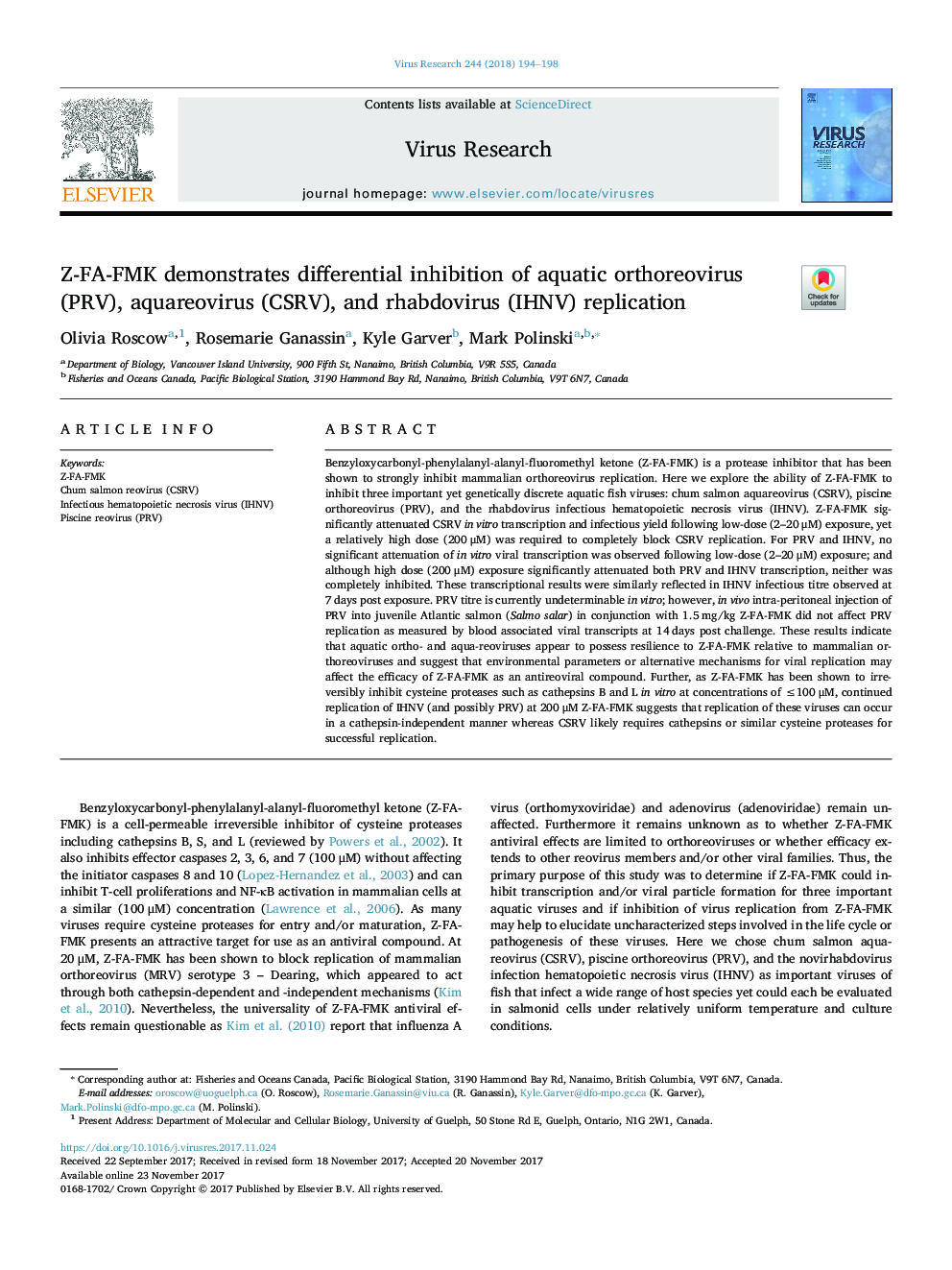| Article ID | Journal | Published Year | Pages | File Type |
|---|---|---|---|---|
| 8752012 | Virus Research | 2018 | 5 Pages |
Abstract
Benzyloxycarbonyl-phenylalanyl-alanyl-fluoromethyl ketone (Z-FA-FMK) is a protease inhibitor that has been shown to strongly inhibit mammalian orthoreovirus replication. Here we explore the ability of Z-FA-FMK to inhibit three important yet genetically discrete aquatic fish viruses: chum salmon aquareovirus (CSRV), piscine orthoreovirus (PRV), and the rhabdovirus infectious hematopoietic necrosis virus (IHNV). Z-FA-FMK significantly attenuated CSRV in vitro transcription and infectious yield following low-dose (2-20 μM) exposure, yet a relatively high dose (200 μM) was required to completely block CSRV replication. For PRV and IHNV, no significant attenuation of in vitro viral transcription was observed following low-dose (2-20 μM) exposure; and although high dose (200 μM) exposure significantly attenuated both PRV and IHNV transcription, neither was completely inhibited. These transcriptional results were similarly reflected in IHNV infectious titre observed at 7 days post exposure. PRV titre is currently undeterminable in vitro; however, in vivo intra-peritoneal injection of PRV into juvenile Atlantic salmon (Salmo salar) in conjunction with 1.5 mg/kg Z-FA-FMK did not affect PRV replication as measured by blood associated viral transcripts at 14 days post challenge. These results indicate that aquatic ortho- and aqua-reoviruses appear to possess resilience to Z-FA-FMK relative to mammalian orthoreoviruses and suggest that environmental parameters or alternative mechanisms for viral replication may affect the efficacy of Z-FA-FMK as an antireoviral compound. Further, as Z-FA-FMK has been shown to irreversibly inhibit cysteine proteases such as cathepsins B and L in vitro at concentrations of â¤100 μM, continued replication of IHNV (and possibly PRV) at 200 μM Z-FA-FMK suggests that replication of these viruses can occur in a cathepsin-independent manner whereas CSRV likely requires cathepsins or similar cysteine proteases for successful replication.
Related Topics
Life Sciences
Immunology and Microbiology
Virology
Authors
Olivia Roscow, Rosemarie Ganassin, Kyle Garver, Mark Polinski,
